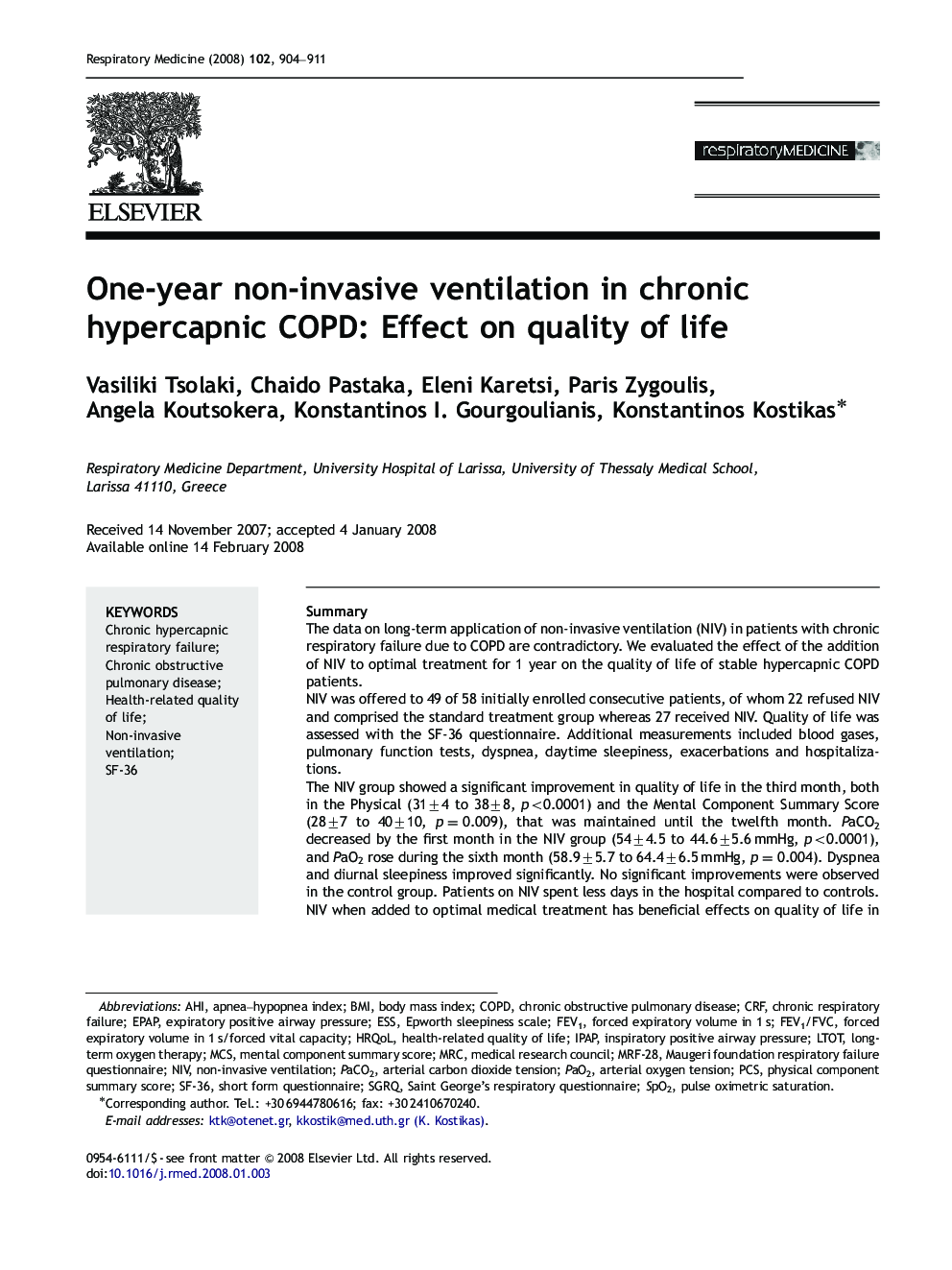| Article ID | Journal | Published Year | Pages | File Type |
|---|---|---|---|---|
| 4212408 | Respiratory Medicine | 2008 | 8 Pages |
SummaryThe data on long-term application of non-invasive ventilation (NIV) in patients with chronic respiratory failure due to COPD are contradictory. We evaluated the effect of the addition of NIV to optimal treatment for 1 year on the quality of life of stable hypercapnic COPD patients.NIV was offered to 49 of 58 initially enrolled consecutive patients, of whom 22 refused NIV and comprised the standard treatment group whereas 27 received NIV. Quality of life was assessed with the SF-36 questionnaire. Additional measurements included blood gases, pulmonary function tests, dyspnea, daytime sleepiness, exacerbations and hospitalizations.The NIV group showed a significant improvement in quality of life in the third month, both in the Physical (31±4 to 38±8, p<0.0001) and the Mental Component Summary Score (28±7 to 40±10, p=0.009), that was maintained until the twelfth month. PaCO2 decreased by the first month in the NIV group (54±4.5 to 44.6±5.6 mmHg, p<0.0001), and PaO2 rose during the sixth month (58.9±5.7 to 64.4±6.5 mmHg, p=0.004). Dyspnea and diurnal sleepiness improved significantly. No significant improvements were observed in the control group. Patients on NIV spent less days in the hospital compared to controls.NIV when added to optimal medical treatment has beneficial effects on quality of life in stable hypercapnic COPD patients, with additional improvements in arterial blood gases, dyspnea and daytime sleepiness.
